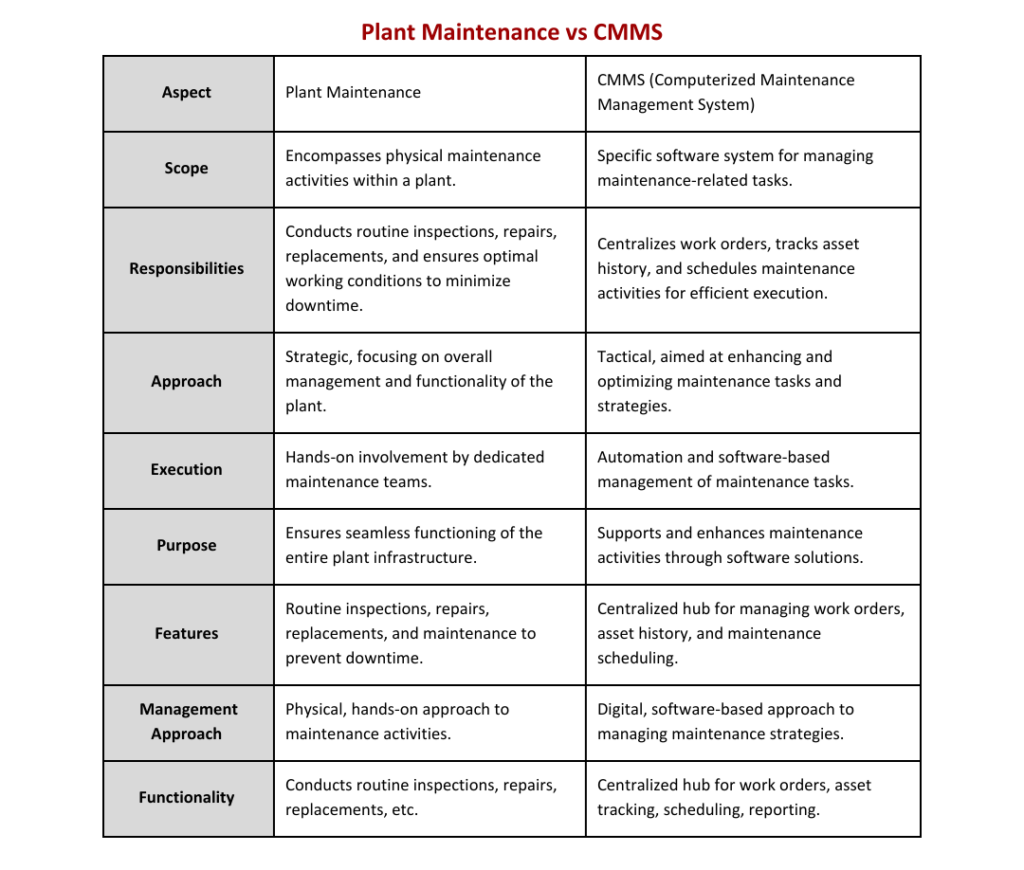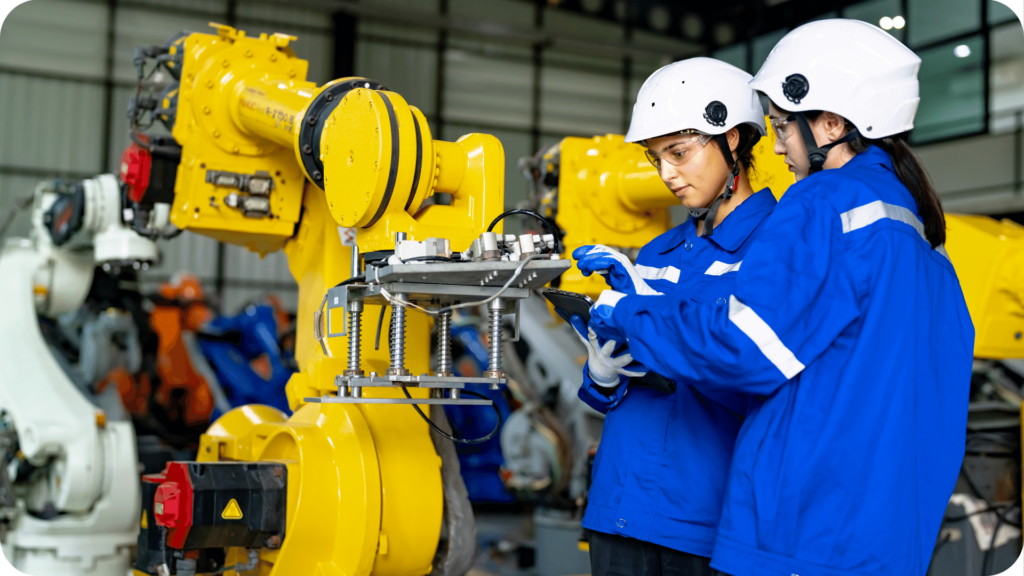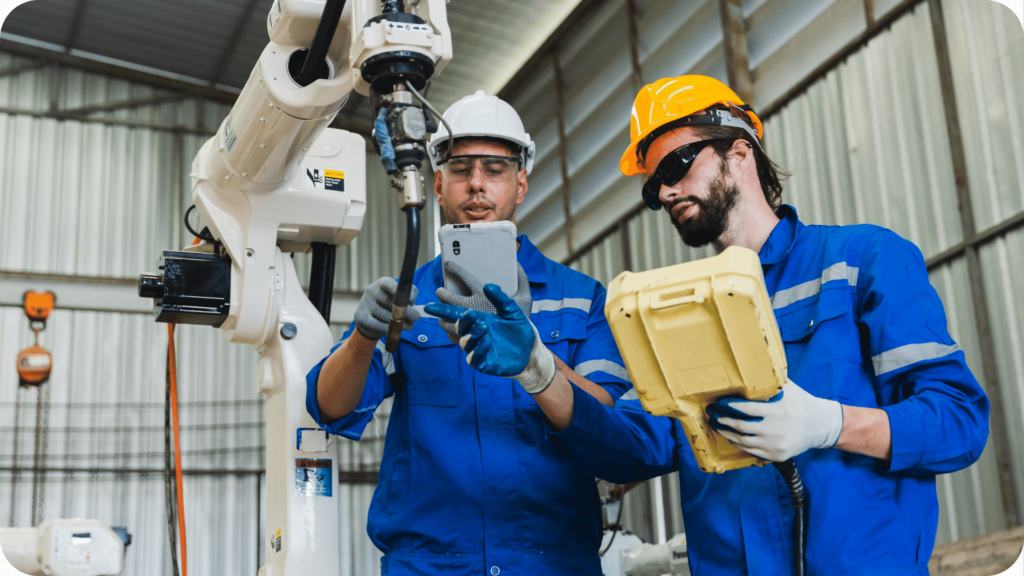Plant Maintenance vs CMMS – What are the Key Differences?

Introduction
Plant maintenance and CMMS (Computerized Maintenance Management System) are two terms that are often used interchangeably, but they are not the same thing. Both concepts are essential for keeping your plant running smoothly, but they each have their own unique features and benefits.
Understanding the differences between plant maintenance and CMMS can help you make informed decisions about how to manage your plant’s maintenance needs.
Whether you’re a plant manager or a maintenance professional, this blog post will help you demystify plant maintenance and CMMS, so you can make informed decisions about your plant’s maintenance needs.
In the following sections, we will delve into the specifics of Plant Maintenance vs CMMS, highlighting their unique characteristics and discussing how they can work together to optimize maintenance processes and improve organizational efficiency.
What is Plant maintenance?
Plant maintenance refers to the overall activities and processes involved in ensuring the optimal functioning and reliability of equipment, machinery, and infrastructure within a manufacturing or industrial facility. It encompasses a broad range of tasks aimed at preventing equipment failures, minimizing downtime, and maximizing productivity.
At its core, plant maintenance involves the regular inspection, servicing, and repair of equipment to ensure it remains in good working condition. This includes activities such as lubrication, cleaning, calibration, and replacement of worn-out parts. Additionally, plant maintenance also involves the implementation of preventive maintenance strategies to identify and address potential issues before they escalate into major problems.
Key components of plant maintenance include:
➔ Routine inspections: Regularly scheduled inspections are conducted to identify any signs of wear, damage, or potential issues with equipment. These inspections help in detecting problems early on, allowing for timely repairs or replacements.
➔ Maintenance planning: Proper planning is crucial in plant maintenance. This involves scheduling maintenance activities, allocating resources, and coordinating with different departments to minimize disruptions to production.
➔ Work order management: Maintenance work orders are generated to document and track maintenance tasks. This includes capturing details such as the nature of the problem, required materials, assigned technicians, and completion status.
➔ Asset management: Effective plant maintenance involves comprehensive asset management, including inventory control, tracking equipment performance, and determining the lifespan of assets. This helps in making informed decisions regarding repair, replacement, or upgrading of equipment.
➔ Maintenance history tracking: Keeping a detailed record of maintenance activities is essential for analyzing trends, identifying recurring issues, and assessing the effectiveness of maintenance strategies. This information helps in making data-driven decisions for continuous improvement.
While plant maintenance focuses on the physical upkeep of equipment and infrastructure, it should be noted that it overlaps with Computerized Maintenance Management Systems (CMMS).
What is CMMS?
CMMS, or Computerized Maintenance Management System, is a powerful tool that revolutionizes plant maintenance. It is a software solution designed to streamline and optimize maintenance operations, providing a centralized platform for managing assets, work orders, preventive maintenance, inventory, and more.
At its core, CMMS acts as a digital hub, allowing maintenance teams to efficiently track and manage all aspects of their maintenance activities. With features like asset management, technicians can easily access information about equipment, including maintenance history, manuals, and warranties. This enables them to make informed decisions and perform proactive maintenance, reducing downtime and maximizing asset lifespan.
Core Functionalities
➔ Asset Management: Provides detailed equipment information, including maintenance history, manuals, and warranties.
➔ Work Order Management: Enables efficient communication between maintenance teams and other departments, allowing for the creation, assignment, and tracking of work orders.
➔ Preventive Maintenance: Allows proactive planning and execution of maintenance tasks by setting schedules and reminders, minimizing equipment failure and downtime.
➔ Inventory Management: Tracks spare parts and supplies, ensuring optimal inventory levels and reducing emergency purchases.
In addition to these core functionalities, it often offers additional features like reporting and analytics, allowing maintenance managers to gain insights into key performance indicators, identify trends, and make data-driven decisions.
Integration capabilities with other systems, such as Enterprise Resource Planning (ERP) or Internet of Things (IoT) devices, further enhances the capabilities of the system, enabling real-time data synchronization and automation.
Overall, it empowers maintenance teams to streamline their processes, improve productivity, and reduce costs. By centralizing maintenance activities, it eliminates the need for manual, paper-based systems, reducing administrative overhead and improving data accuracy.
Whether it’s a small facility or a large industrial plant, it is a valuable tool for optimizing maintenance operations and ensuring the longevity and reliability of critical assets.
Plant Maintenance vs CMMS: Understanding the fundamental differences

By understanding these fundamental differences, plant managers and maintenance professionals can make informed decisions about implementing the right strategies and utilizing the appropriate tools to optimize maintenance operations.
Choosing the right solution
Factors to consider when deciding between plant maintenance and CMMS
When it comes to managing maintenance activities in a plant or facility, choosing the right solution can make a significant difference in the efficiency and effectiveness of your operations. While both plant maintenance software and computerized maintenance management systems (CMMS) serve the purpose of streamlining maintenance processes, it’s crucial to understand the differences and consider various factors before making a decision.
First and foremost, consider the specific needs and requirements of your organization. Plant maintenance software is typically designed to cater to the specific needs of industrial plants and facilities, focusing on equipment and asset management, preventive maintenance scheduling, and work order management. On the other hand, CMMS solutions offer a broader scope, encompassing not only maintenance but also inventory control, purchasing, and other related functionalities.
Another factor to consider is the size and complexity of your operations. If you have a relatively small facility with a limited number of assets and maintenance tasks, plant maintenance software might suffice. However, for larger organizations with multiple sites, extensive equipment inventories, and complex maintenance workflows, a comprehensive CMMS solution would be more appropriate.
Integration capabilities should also be taken into account. If you already have existing software systems in place for other areas of your operations, such as Enterprise Resource Planning (ERP) or asset management systems, it’s crucial to ensure compatibility and seamless integration with your chosen maintenance solution. This will facilitate data sharing, streamline processes, and provide a holistic view of your operations.
Furthermore, consider the scalability and flexibility of the solution. As your organization grows and evolves, your maintenance requirements may change. Therefore, it’s important to select a solution that can adapt and scale with your business needs over time. Look for features like customizable workflows, reporting capabilities, and the ability to add or modify modules as needed.
Finally, budgetary considerations are essential in the decision-making process. Evaluate the cost of implementing and maintaining the chosen solution, considering factors such as licensing fees, implementation costs, training, and ongoing support. While it’s important to consider your budget constraints, it’s equally crucial to ensure that the solution meets your functional requirements and provides long-term value for your organization.
By carefully considering these factors, you can make an informed decision when choosing between plant maintenance software and CMMS.
Conclusion:
We hope you found our blog post on demystifying plant maintenance vs. CMMS helpful in understanding the differences and exploring the overlapping features. It can be confusing to differentiate between the two, but we have provided you with a clear breakdown of their functionalities. By understanding the distinctions, you can make more informed decisions for your plant’s maintenance strategy.
Thank you for reading and may your plant maintenance endeavors be successful and streamlined!
If you’re keen on exploring SAP Plant Maintenance Predictive Analytics further, check out our informative video for deeper insights. For further queries or guidance contact KaarTech.
FAQ’s
What distinguishes plant maintenance software from CMMS?
Plant maintenance software focuses on specific industrial needs like equipment and asset management, while CMMS offers a broader scope including inventory control and purchasing functionalities.
How can I determine which solution suits my organization’s size?
For smaller facilities with limited assets, plant maintenance software may suffice, whereas larger operations benefit more from comprehensive CMMS solutions.
Why is integration capability crucial when choosing a solution?
Seamless integration with existing systems ensures streamlined processes, data sharing, and a comprehensive view of operations, optimizing efficiency.
What factors should I consider beyond current needs when selecting a solution?
Scalability and flexibility are key. Choosing a solution adaptable to future growth ensures it can evolve with your organization’s changing maintenance requirements.


